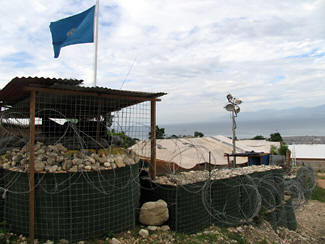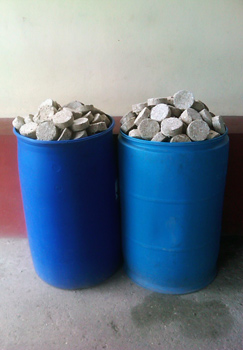| Energy & Environment |
| Want to send this page or a link to a friend? Click on mail at the top of this window. |
More Special Reports / More Energy & Environment |
| Posted November 24, 2009 |
|
| Development: Recycling Eases Tensions in 'a Very Violent Neighborhood' |
|
By NATHANIAL GRONEWOLD |
|
of Greenwire |
 |
| U.N. troops on standby in a former gang stronghold of Port-au-Prince. Community pride in a nearby recycling center is making it safer for them to stay. (Photo by Nathanial Gronewold) |
|
|
|
| Replacing charcoal | |
|
|
 |
| These briquettes are made from recycled waste paper. They burn and cleaner than charcoal but are half the price, and could hold the key to ending Haiti's ongoing deforestation problem. (Photo by Nathanial Gronewold) |
|
|
|
| CVR work expands | |
|
|
| Wehaitians.com, the scholarly journal of democracy and human rights |
| More from wehaitians.com |